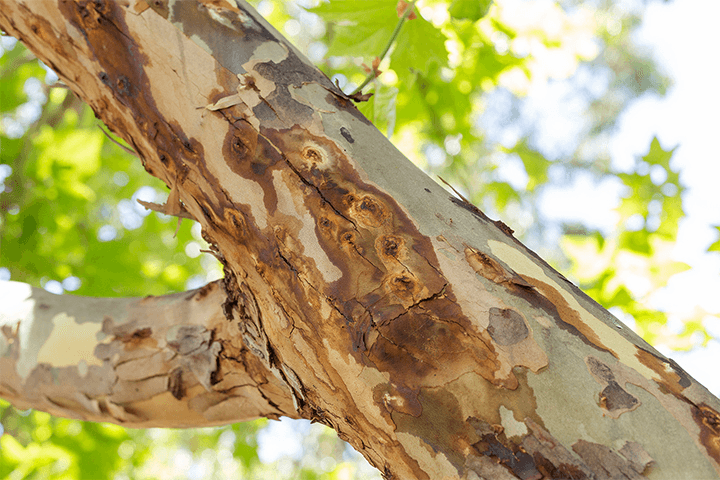
Three new projects announced to drive shot-hole borer research
WAARC is investing $2.17 million across the three new projects to drive innovative solutions to bolster defences against the shot-hole borer, undertaking critical research in WA environments and conditions.
Expressions of interest ran from 20 November to 18 December 2024 calling on WA researchers, scientists and industry experts to submit research proposals for consideration under the program.
A two-stage approval process followed which included final assessment by a panel of national and international industry leaders.
The three-year projects will focus on key research priorities such as improved control strategies, detection and surveillance methods, and better understanding of host biology and interactions in the WA environment.
The priority areas were identified at a WAARC-hosted workshop which brought together 40 local industry experts to discuss how research could support efforts to control the tiny beetle and its associated fungus.
Each of the approved projects will be led by a WAARC university member: Curtin University, Murdoch University, and The University of Western Australia (UWA).
They will benefit from collaboration between at least three WAARC members per project including the Collaboration’s non-university members: CSIRO, Department of Primary Industries and Regional Development, and Grower Group Alliance.
Postgraduate degree students and early-career researchers will be supported through the process, fostering the next generation of biosecurity researchers.

Project summaries
Project 1: Decision support tools for managing polyphagous shot-hole borer
WAARC funding: $680,000
Term: 3.5 years
Research lead: Curtin University (Prof. Ben Phillips)

This Curtin University-led project will develop predictive models and risk maps to help prioritise surveillance and control efforts, ensuring efficient resource allocation and enhanced decision-making. The project benefits from collaboration with DPIRD, Murdoch University and The University of Western Australia, leveraging complementary expertise to enhance the depth and applicability of its outputs. The methodologies and tools developed are adaptable to other biosecurity challenges. The project strengthens WA’s biosecurity expertise in modelling and epidemiology, ensuring lasting benefits for the state’s capability to respond to future pest threats.
Project 2: Increasing tools for control of polyphagous shot-hole borer
WAARC funding: $705,000
Term: Three years
Research lead: The University of Western Australia (A/Prof. Theo Evans)

The University of Western Australia-led project will investigate the development and use of innovative chemical and biological control strategies against the pest, as well as improved pest detection by identifying new attractive chemical lures and harnessing community involvement. The project benefits from interdisciplinary collaboration between The University of Western Australia, Curtin University, Murdoch University, CSIRO and DPIRD, drawing on expertise in entomology, biochemistry and community psychology.
Project 3: Developing an integrated pest containment strategy for polyphagous shot-hole borer (fusarium dieback) to facilitate long-term control
WAARC funding: $782,000
Term: Three years
Research lead: Murdoch University, (Prof. Treena Burgess)

This Murdoch University-led project will focus on two key areas: (1) the fusarium fungus associated with polyphagous shot-hole borer, examining its host range in WA to support targeted containment and control; and (2) the application of advanced tools such as remote sensing, AI-driven risk mapping, and geospatial analysis to improve early detection. Collaborations with government agencies, universities, and environmental consultants will provide critical expertise, field access, practical implementation pathways, and stakeholder engagement. The project will also work closely with commercial growers and the nursery and horticulture industries to ensure outputs are actionable, scalable, and directly support agricultural biosecurity.
Polyphagous Shot-hole Borer Research Symposium
The WA Agricultural Research Collaboration hosted its Polyphagous Shot-hole Borer Research Symposium on 31 July 2025, which brought together about 90 leading scientists, policy-makers, WAARC members and partners for an invite-only event focused on limiting the spread of PSHB. The Symposium was an insightful afternoon and an opportunity to learn more about WAARC’s three collaborative PSHB research projects and participate in a panel Q&A discussion.
Read more about the event here: WAARC Polyphagous Shot-hole Borer Research Symposium | WA Agricultural Research Collaboration
To view recordings of the Symposium presentations and panel discussion, visit the WAARC YouTube Channel.

Related articles:
Supporting materials relevant to research submissions:
For more information, in particular on the DPIRD PSHB response, please see the DPIRD PSHB webpage.

Enquiries
If you’d like more information about this, or any of our other projects, please contact the team.
Send us a message








